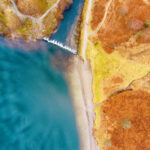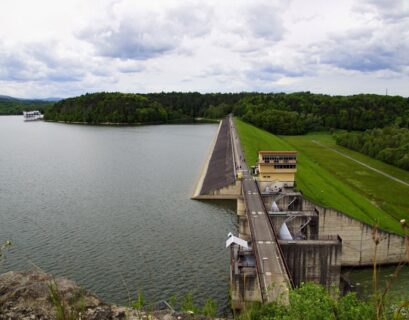The PERUN system is a network of lightning detection and location sensors distributed throughout Poland. It was established 20 years ago as a response to the needs of the modern economy, for which information on the occurrence of lightning, based on observations made by observers at meteorological stations, was no longer sufficient. The possibility of obtaining instrumental data from a uniform, nationwide system ensuring full automatization marked a new era. Today, it is time for another transformation.
Lightning data is gaining popularity and is widely available on the Internet. Users’ expectations continue to grow. This is a significant challenge for IMGW, as 4 SAFIR 3000 sensors, which were installed when the system was established are still operating in the PERUN network. They are end-of-life and more modern solutions have appeared on the market. In addition, lightning is detected by precise measurement of incoming electromagnetic radiation, and some station locations are no longer free of noise. Hence the decision on another modernization of the PERUN system, under which the sensors will be replaced, four stations will change their location and a new grid point will be created in the Bieszczady Mountains.
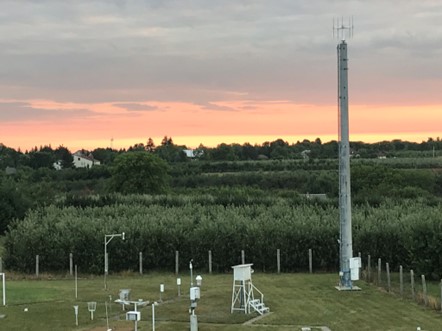
Currently, the lightning detection and location system consists of 12 operational detection stations located in Poland, including:
- 8 TLS 200 detection stations located in: Kozienice, Legnica, Legionowo, Chojnice, Olsztyn, Białystok, Włodawa and Sandomierz;
- 4 SAFIR 3000 detection stations located in Toruń, Częstochowa, Kalisz and Gorzów Wielkopolski.
Additionally, one SAFIR 3000 test detection station is located in Warsaw. The entire system is operated by the TLP (Total Lightning Processor) central unit.
The Perun system enables the analysis of the current electrical state of the atmosphere, in particular, the visualization of the location of CG (cloud-to-grand) discharges. The data is available, among others, on the weather service meteo.imgw.pl and the numerical forecast service cmm.imgw.pl as well as via mobile applications for Android and iOS. Archival data is available at https://danepubliczne.imgw.pl/datastore.
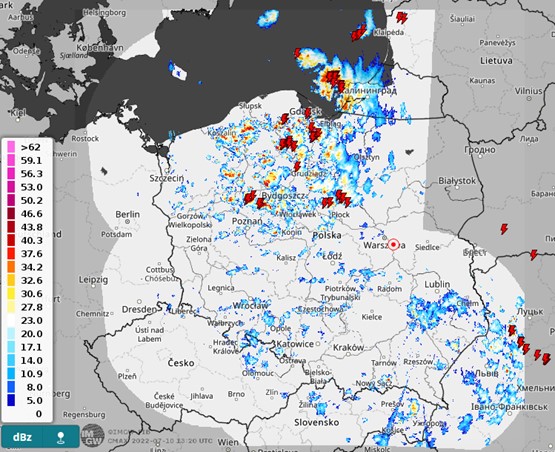
Scope of work
The PERUN system is being modernized as part of the Odra-Vistula River Basins Flood Protection Project funded by the World Bank loan. The scope of the planned works includes:
- replacement of the end-of-life SAFIR 3000 series stations with LS 7002 stations, and their relocation (target stations locations are: Legnica, Michałków, Dobryszyce, and Przelewice);
- installation of the new LS 7002 station in Lesko;
- relocation of the TLS 200 station from Legnica to Grudziądz;
- installation of the latest version of the TLP 200 central unit;
- installation of a new system IRIS for visualization and analysis of data on registered discharges, built using web technology.
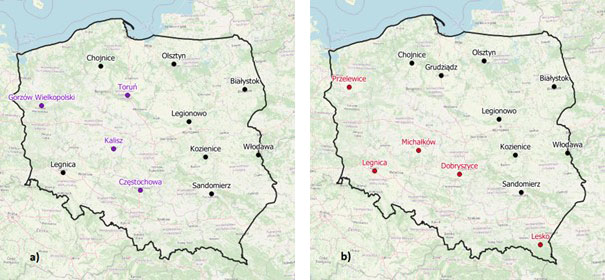
All of the above actions will improve the efficiency and accuracy of lightning location and standardize the system by decommissioning old SAFIR 3000 stations, which are not currently supported the producer.
Use of data from the PERUN system
PERUN is a professional tool for detecting dangerous phenomena related to atmospheric lightning. Due to the careful care of a specialized service group and the substantive supervision of the Institute of Meteorology and Water Management (IMGW), the system works precisely and practically without failure. PERUN data not only supports the work of weather forecasters by providing information on the occurrence of lightning but also constitutes a significant element for the automatic analytical and forecasting systems of IMGW. The new system for visualization and analysis of data on registered IRIS lightning, built with web technology, will be available mainly to the employees of the Institute.
Lightning data is used by various institutions, including crisis management teams, military and civil aviation (both state and commercial services and aeroclubs), as well as fire, mountain, and water rescue services. They are also a valuable source of information in sectors such as the maritime industry, construction and energy, insurance, and sewage treatment plants for large urban agglomerations. Media, research, and scientific institutions also use them.
The modernization of the PERUN system is expected to be completed this year. We hope that it will run smoothly and without problems. Importantly, the relocation of the stations will enable the sensors to be replaced on an overlapping basis – the old ones will be shut down only when the new ones start taking measurements. It will avoid interruptions in data access. Because of the modernization, the PERUN system will once again be at the technological forefront of the lightning detection network, serving both professionals and the general public.
Main photo: Krzysztof Kotkowicz | Unsplash.


